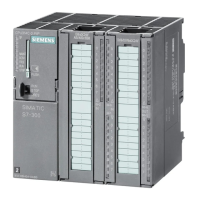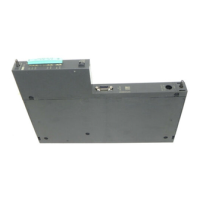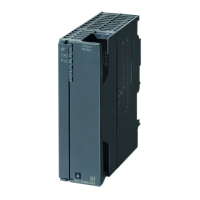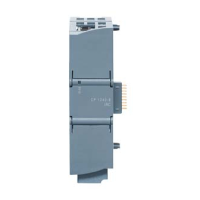Memory concept
4.1 Memory areas and retentivity
CPU 31xC and CPU 31x, Technical Data
4-4 Manual, 01/2006 Edition, A5E00105475-06
Retentive behavior of a DB for CPUs with firmware >= V2.1.0
For these CPUs you can specify in STEP 7 (beginning with version 5.2 + SP 1), or at
SFC 82 CREA_DBL (parameter ATTRIB -> NON_RETAIN bit), whether a DB at POWER
ON/OFF or RUN-STOP
• keeps the actual values (retentive DB), or
• accepts the initial values from load memory (non-retentive DB)
Table 4-3 Retentive behavior of DBs for CPUs with firmware >= V2.1.0
At POWER ON/OFF or restart (warm start) of the CPU, the DB should
receive the initial values
(non-retentive DB)
retain the actual values (retentive DB)
Reason:
At POWER ON/OFF and restart (STOP-
RUN) of the CPU, the actual values of the
DB are non-retentive. The DB receives the
start values from load memory.
Reason:
At POWER OFF/ON and restart (STOP-RUN) of the
CPU, the actual values of the DB are retained.
Requirement in STEP 7:
• The "Non-retain" check box must be set
in the block properties of the DB, or
• a non-retentive DB was generated with
SFC 82 "CREA_DBL" and the
corresponding block attribute (ATTRIB -
> NON_RETAIN bit.)
Requirement in STEP 7:
• The "Non-retain" check box must be reset in the
block properties of the DB or
• a retentive DB was generated with SFC 82.
Note
Note:
• Only 256 KB of RAM can be used for retentive DBs on a CPU 317.
• Only 700 KB of RAM can be used for retentive DBs on a CPU 319.
The remainder of the RAM is used by code blocks and non-retentive data blocks.
4.1.4 Address areas of system memory
The system memory of the S7 CPUs is organized in address areas (refer to the table below).
In a corresponding operation of your user program, you address data directly in the relevant
address area.
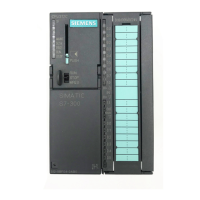
